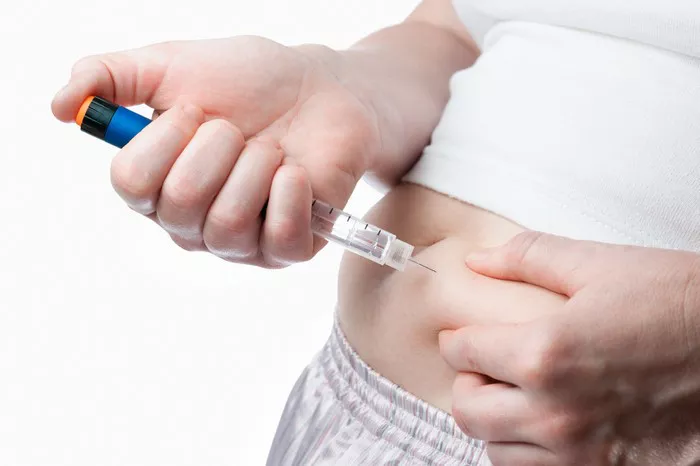Insulin resistance is a critical component of many metabolic disorders, most notably type 2 diabetes. It occurs when cells in the body become less responsive to the hormone insulin, which regulates blood glucose levels. This condition can lead to high blood sugar and eventually diabetes if not managed properly. In this article, we will delve into the pathophysiology of insulin resistance, its implications, and the various medicinal treatments available to combat this condition.
Pathophysiology of Insulin Resistance
Insulin resistance is primarily a cellular disorder where the body’s muscle, fat, and liver cells do not respond appropriately to insulin, a hormone produced by the pancreas. Insulin’s main role is to facilitate the uptake of glucose into cells for energy production or storage. When cells become resistant, glucose builds up in the bloodstream, prompting the pancreas to produce more insulin. Over time, this compensatory mechanism can lead to hyperinsulinemia and eventually pancreatic beta-cell dysfunction, resulting in type 2 diabetes.
Several factors contribute to the development of insulin resistance, including genetic predisposition, obesity, physical inactivity, and dietary habits. Central obesity, characterized by excess fat around the abdomen, is particularly linked to insulin resistance. This is due to the fact that visceral fat releases free fatty acids and pro-inflammatory cytokines, which interfere with insulin signaling pathways.
Clinical Manifestations and Diagnosis
Patients with insulin resistance may present with various clinical signs, including acanthosis nigricans (dark, velvety patches of skin), polycystic ovary syndrome (PCOS) in women, and metabolic syndrome, which encompasses a cluster of conditions such as hypertension, dyslipidemia, and central obesity. Laboratory tests often reveal elevated fasting blood glucose levels, high insulin levels, and sometimes elevated liver enzymes indicating fatty liver disease.
The diagnosis of insulin resistance is primarily clinical but can be supported by laboratory tests such as the Homeostatic Model Assessment of Insulin Resistance (HOMA-IR), fasting insulin levels, and the oral glucose tolerance test (OGTT).
Medicinal Treatments for Insulin Resistance
Managing insulin resistance involves a multifaceted approach, combining lifestyle interventions with pharmacotherapy. While lifestyle modifications such as diet and exercise are foundational, medications play a crucial role, especially in patients with established diabetes or significant risk factors. Below, we discuss the primary classes of medications used to treat insulin resistance.
1. Metformin
Metformin is the most widely prescribed medication for insulin resistance and type 2 diabetes. It belongs to the biguanide class and works by reducing hepatic glucose production, enhancing insulin sensitivity, and improving peripheral glucose uptake.
Mechanism of Action: Metformin activates AMP-activated protein kinase (AMPK), an enzyme that plays a key role in cellular energy homeostasis. Activation of AMPK reduces gluconeogenesis in the liver and enhances glucose uptake in muscles.
Clinical Benefits: Metformin has been shown to lower HbA1c levels by 1-2%, reduce the risk of cardiovascular events, and promote modest weight loss. It also has a favorable safety profile, with gastrointestinal disturbances being the most common side effect.
Usage: Metformin is typically initiated at a low dose (500 mg once daily) and gradually increased to minimize gastrointestinal side effects. It can be used as monotherapy or in combination with other antidiabetic agents.
2. Thiazolidinediones (TZDs)
Thiazolidinediones, such as pioglitazone and rosiglitazone, are another class of medications that improve insulin sensitivity. They are ligands for the peroxisome proliferator-activated receptor-gamma (PPAR-γ), a nuclear receptor that regulates gene expression involved in glucose and lipid metabolism.
Mechanism of Action: By activating PPAR-γ, TZDs enhance insulin sensitivity in adipose tissue, muscle, and liver, reduce hepatic glucose production, and redistribute fat from visceral to subcutaneous depots.
Clinical Benefits: TZDs can reduce HbA1c by 0.5-1.4% and have beneficial effects on lipid profiles, such as increasing HDL cholesterol. They also have anti-inflammatory properties, which may be beneficial in reducing cardiovascular risk.
Usage: TZDs are taken once daily, with doses adjusted based on efficacy and tolerability. However, they have notable side effects, including weight gain, fluid retention, and an increased risk of heart failure and bone fractures. Therefore, their use is often limited to patients who cannot tolerate other antidiabetic medications.
3. GLP-1 Receptor Agonists
Glucagon-like peptide-1 (GLP-1) receptor agonists, such as exenatide and liraglutide, are injectable medications that mimic the incretin hormone GLP-1. These agents enhance glucose-dependent insulin secretion, suppress glucagon release, slow gastric emptying, and promote satiety.
Mechanism of Action: By activating GLP-1 receptors, these drugs enhance insulin secretion in response to meals and reduce inappropriate glucagon release, leading to improved postprandial glucose control.
Clinical Benefits: GLP-1 receptor agonists lower HbA1c by approximately 1-1.5%, promote significant weight loss, and have cardiovascular benefits, including reduced risk of major adverse cardiovascular events (MACE).
Usage: These medications are administered via subcutaneous injection, with dosages varying depending on the specific agent. Common side effects include nausea and vomiting, which often decrease with continued use.
4. SGLT2 Inhibitors
Sodium-glucose co-transporter-2 (SGLT2) inhibitors, such as empagliflozin and canagliflozin, represent a novel class of medications that promote urinary glucose excretion by inhibiting glucose reabsorption in the proximal renal tubules.
Mechanism of Action: By blocking SGLT2 in the kidneys, these drugs increase the amount of glucose excreted in the urine, leading to lower blood glucose levels.
Clinical Benefits: SGLT2 inhibitors reduce HbA1c by about 0.5-1%, induce weight loss, lower blood pressure, and have been shown to reduce the risk of cardiovascular events and progression of kidney disease in patients with diabetes.
Usage: These oral medications are taken once daily, with dose adjustments based on renal function. Side effects can include urinary tract infections, genital mycotic infections, and dehydration.
5. DPP-4 Inhibitors
Dipeptidyl peptidase-4 (DPP-4) inhibitors, such as sitagliptin and saxagliptin, work by prolonging the activity of incretin hormones (GLP-1 and GIP), thereby enhancing insulin secretion and suppressing glucagon release in a glucose-dependent manner.
Mechanism of Action: DPP-4 inhibitors prevent the degradation of incretin hormones, thus increasing their levels and enhancing their effects on glucose regulation.
Clinical Benefits: These medications lower HbA1c by 0.5-0.8%, are weight-neutral, and have a low risk of hypoglycemia. They are generally well-tolerated, with the most common side effects being nasopharyngitis and headache.
Usage: DPP-4 inhibitors are taken orally once daily. They are often used in combination with other antidiabetic agents, particularly in patients who cannot tolerate metformin.
6. Insulin Therapy
In patients with severe insulin resistance and beta-cell dysfunction, exogenous insulin may be necessary to achieve glycemic control. Various insulin formulations are available, including rapid-acting, long-acting, and premixed insulins.
Mechanism of Action: Exogenous insulin replaces or supplements endogenous insulin, facilitating glucose uptake by cells and reducing blood glucose levels.
Clinical Benefits: Insulin therapy is highly effective in lowering blood glucose and HbA1c levels. It can be tailored to meet the individual needs of patients through different regimens, such as basal-bolus or continuous subcutaneous insulin infusion (CSII).
Usage: Insulin doses are individualized based on blood glucose monitoring and patient needs. Common side effects include hypoglycemia and weight gain. Patients require education on insulin administration, dose adjustment, and hypoglycemia management.
Emerging Therapies and Future Directions
Research into insulin resistance and its treatment is ongoing, with several promising therapies on the horizon. These include:
1. Dual PPAR Agonists
Dual PPAR agonists target both PPAR-α and PPAR-γ, aiming to provide the benefits of TZDs while minimizing their side effects. These agents are still under investigation but show potential in improving insulin sensitivity and lipid profiles.
2. GLP-1/GIP Co-agonists
These novel incretin-based therapies target both GLP-1 and glucose-dependent insulinotropic polypeptide (GIP) receptors, offering enhanced glycemic control and weight loss benefits. Early clinical trials have shown promising results in terms of efficacy and safety.
3. FGF21 Analogs
Fibroblast growth factor 21 (FGF21) analogs are being studied for their potential to improve insulin sensitivity, promote weight loss, and reduce liver fat. FGF21 is a hormone involved in regulating metabolism and energy balance.
4. Gene Therapy and Stem Cell Research
Advances in gene therapy and stem cell research hold the potential to provide long-term solutions for insulin resistance by restoring normal insulin signaling and beta-cell function. These approaches are still in the experimental stages but offer hope for future breakthroughs.
Conclusion
Insulin resistance is a complex condition with significant health implications, particularly in the context of type 2 diabetes. Effective management requires a comprehensive approach that includes lifestyle modifications and pharmacotherapy. Metformin, TZDs, GLP-1 receptor agon
Related topics:
At What Sugar Level Is Insulin Required During Pregnancy?
























